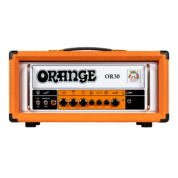Interview – Scott de Cancer Bats
Hey guys, what’s up I’m Scott Middleton and I play in Cancer Bats. So we just dropped an album called The Spark That Moves. It’s our 6th studio album. We kinda did a surprise thing – right now we’re celebrating our 10 year anniversary of our 2nd album Hail Destroyer which has been really cool and everyone’s been really excited. While the focus has been on that, we’ve been secretly making a new record and we just dropped that the day of our first show for the 10th anniversary as just kinda like, to give back to all our fans that have supported us through the years. It’s like, “hey it’s for you guys” it’s not about hype, we worked really hard on these songs and we hope everyone really enjoys this just as much as our past stuff – the reception has been amazing and all the reviews that have been coming in have been way better than what we could have hoped for.
It’s exciting to celebrate the old Cancer Bats and user in the new era of the band. I think our band, when we first stared out was was a bit, um, a bit more simplistic in terms of arrangements and idea’s I think. Things were a little bit faster, a little bit knarlier – we were pushing different styles for the bands and trying to be creative. It’s like how do you make a heavy interesting for 2018? Because so much of it has been done before. Yeah, we’ll always have classic elements of rock, punk and metal in our band but we’re always going to try and thing forward and see where we can push boundaries forward too.
The Bag Bangeetar is a pedal that I got a couple months before we actually went into to record and I mean, that pedal blew me away the second I tried it. I threw it in front of my little crapp practise amp that I’ve had since I was 15 – this terrible thing, but it’s something that I’ve used to write riffs on when I was home. I just plugged it in and it just sounded like a monster stack – it was crazy. Just the flexibility of the EQ – the Baxandall EQ… it just has a crazy amount of range and it’s all about sounding good. Because there’s a parametric mid-range band, i’m able to take out of any nasty frequencies that a certain guitar pickup might push through too much and I can take that out or I can add stuff that’s missing. The other thing that I notice is that the pots on it are the highest quality – it’s all de-tended to it’s easily recallable so if there’s a setting you just take a photo or write it down and it’s easy to go back and find that place again. As I experimented and wrote a bunch of song idea’s with the pedal, I had to bring it with me to write the new album. The Orange sound is becoming an important part of Cancer Bats in the new direction that we’ve been going in. I bought that pedal with me and I was able to just plug it into the effects return of a loud amp and there it was. There was the sound. When we track the guitars, we do yto9u know passive left and right, and we stereo pan them and entirely one side is the Bax Bangeetar and into an amp that is cranked up and it sounded amazing. It was like ‘holy shit, this is just what we’ve been looking for’!
The other thing that I’ve been doing lately – I don’t know if everyone knows about it – but I’ve been producing a lot of records at my studio at home. What I found was super great with that pedal is that I can use it as a way to have guitarists track live in a room with a drummer. So when we’re tracking drums, I don’t have to have an amp that’s cranked up that bleeding into the drum microphones. It was a Cab Sim out which sounds awesome and gives the guitarists the a comfortable and accurate tone that’s inspiring. One of the drawbacks to headphones is how do you give the guitarist enough gain and tone so when he’s playing alongside a drummer, he’s giving it his all, and that in turn inspires the drummer to hit even harder. That’s been an indispensable studio tool. I had a band come in with the OR120 and you know, it was crazy how close I was able to dial in the Bax Bangeetar pedal to sound like a real Orange Amp – that’s the real difference with so many other distortion pedals out there… we’ve all used them and tried them! This pedal, really feels and sounds like a real amp. As a pre-amp pedal, it’s inspiring to play, so when I’m trying to convince other guitar players to try something they’re like “you want me to plug into a pedal? Shouldn’t I be using a guitar amp or something?” and they’re like “oh, no, that’s good!”.
As a pre-amp pedal, it’s inspiring to play, so when I’m trying to convince other guitar players to try something they’re like “you want me to plug into a pedal? Shouldn’t I be using a guitar amp or something?” and they’re like “oh, no, that’s good!”.
For me it’s been a revolutionary tool for studio work. I can plug in and go direct, that’s one thing, but I can plug into any amplifier and get that Orange sound that I’m looking for which is really cool.
If you think about the Bax Bangeetar in terms of a traditional pre-amp… what I would normally do is, run any other pedal I’m using before it. So I’d put my wahs, compression, any boost or fuzz – I’d run that into the Bax Bangeetar and I’d run any modulation or delay effects, post that pedal so it all kinda ties and again, because it has such an amp-like feel, I don’t need to think too much. It just compliments it really well. That pedal itself is a game machine. It’s not meant for clean tones really, you’re either putting it into a lcean amp or the effects return and turning it into a monster sound – and that’s what I love about it and what I’m always looking for. There’s so many amps out there with a million differnt knobs and six different channels and everyones trying to add extra features and such, but this is just everything you need, it is the high-gain channel that you want. That’s the difference for me. The simplicity with the pots, being easy to recall in a live setting, it’s flexible in it’s EQ – it can work with so many different amps, guitars and pedals… that’s why it’s kind of become the secret weapon for me.



